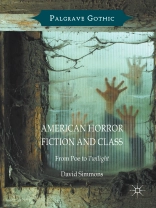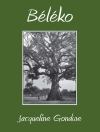In this book, Simmons argues that class, as much as race and gender, played a significant role in the development of Gothic and Horror fiction in a national context. From the classic texts of Edgar Allen Poe and Nathaniel Hawthorne right through to contemporary examples, such as the novels of Stephen King and Stephenie Meyer’s
Twilight Series, class remains an ever present though understudied element. This study will appeal to scholars of American Studies, English literature, Media and Cultural Studies interested in class representations in the horror genre from the nineteenth century to the present day.
Spis treści
1. Introduction: Establishing the Place of Class in US Gothic and Horror Fiction.- 2. Class and Horror Fiction during the Early Twentieth Century.- 3. Class and Horror Fiction at Mid-Century.- 4. Representing Class during the Horror Boom of the 1970s and 1980s.- 5. Horror Fiction and Class in the Contemporary1. Introduction: Establishing the Place of Class in US Gothic and Horror Fiction.- 2. Class and Horror Fiction during the Early Twentieth Century.- 3. Class and Horror Fiction at Mid-Century.- 4. Representing Class during the Horror Boom of the 1970s and 1980s.- 5. Horror Fiction and Class in the Contemporary Period. Period.
O autorze
David Simmons is Senior Lecturer in English and Screen Studies at The University of Northampton, UK. He has published extensively in the field of American literature and culture, including books on the representation of the Anti-Hero during the 1960s, H.P. Lovecraft, and Twentieth Century Canonical fiction.












